|
Ribbon
worms (nemerteans) of Hawai'i
Many thanks to Cory Pittman and Pauline Fiene, who
found most of the animals shown here and took most of the photos.
The
ribbon worms include about 900 species of long, thin, soft-bodied,
often flattened animals. Carnivores, they are characterized by a
long proboscis (sometimes tipped with barbs) which they shoot from
an opening at the tip of the head to impale or entangle their prey.
Some ribbon worms from temperate waters attain lengths of 4-5 ft.;
one from the north Atlantic is reported to reach 60 ft! Although
long, they are highly contractile—a 5 ft. worm can shrink to
6 in. Ribbon worms may have been the first animals to have both
a mouth and an anus connected by a complete digestive tract. Fewer
than 10 species have been identified in Hawai`i.
Learn more about ribbon worms at: http://www.earthlife.net/inverts/nemertea.html.
Here's
an (incomplete) Bishop
Museum list of Hawaiian ribbon worms.
|
|
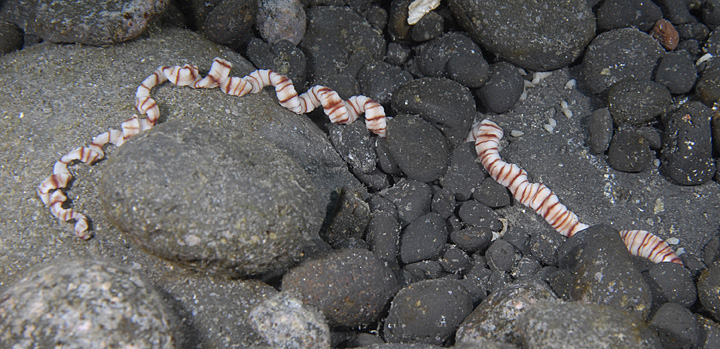
BANDED RIBBON WORM
Baseodiscus cingulatus (Coe, 1906)
Many narrow, reddish brown bands encircle
the slender body, which, like many ribbon worms, can contract or
expand. Fully extended, large specimens attain as much as 4 ft.
The thicker end, marked with many small spots, is the head (not
visible here). The species name means “girdle.” The first
specimens of this ribbon worm were dredged from about 250 ft., but
the animal is also encountered in shallow water and even in tide
pools, usually at night. Known only from the Hawaiian Islands, where
it is the most commonly encountered large ribbon worm. Photo: Kaohe
Bay, Hawai`i. 10 ft.
++++++++++++++++++++++++++++++++++++++++++++++++++++++++++++++++++++++++++++++++++++++++++
|
|
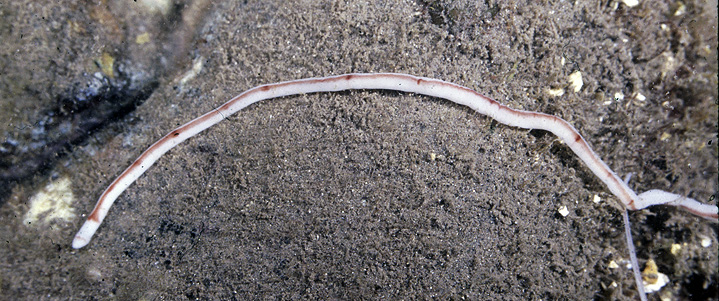
LINED RIBBON WORM
Baseodiscus hemprichii
(Ehrenberg, 1831)
This worm is whitish to flesh-colored
with a reddish or brownish line, sometimes very wide, running from
the back of the head to the tail end of the body. The line widens
at the front, often into a collar, and is interrupted by regularly
spaced spots or transverse bands of a darker color. It occurs from
Easter Island to the Red Sea and east coast of Africa, including
Hawaii. It attains about 3 ft. in length. Photo: Hekili Point, Maui,
in pool. See more
photos of this worm on Keoki Stender's website.
Note: Hawaiian specimens were originally
described as Baseodiscus edmondsoni (Coe, 1934) and some
authorities suggest that its synonomy with the true B. hemprichii
(described from outside Hawaii) is questionable. Thus our local
species might someday revert to its original scientific name. A
smaller Hawaiian species, Baseodiscus univittatus (Coe, 1906),
is similar but the red line runs continuously from the tip of the
head to the posterior extremity of the body.
++++++++++++++++++++++++++++++++++++++++++++++++++++++++++++++++++++++++++++++++++++++++++
|
|
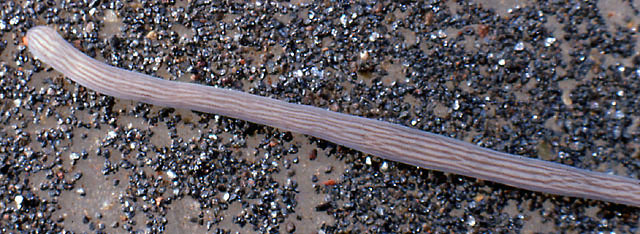

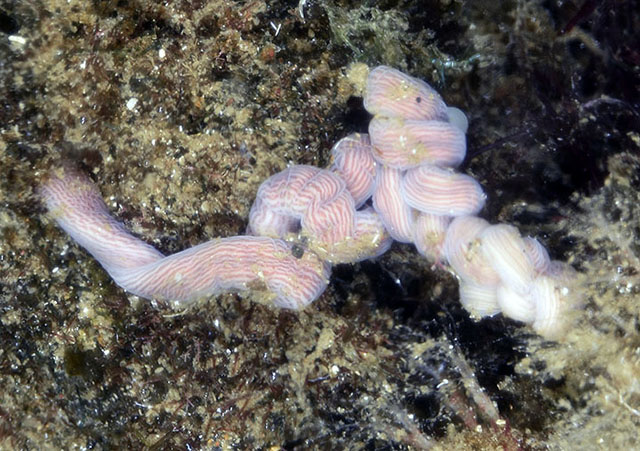
MANY-LINED RIBBON
WORM
? Baseodiscus delineatus
(Delle Chiaje, 1825)
This worm is whitish with many discontinuous
closely spaced reddish or pinkish lines. The pattern resembles that
of Baseodiscus delineatus, a species not previously recorded
from Hawaii. However, we know nothing of its internal structure
so the ID is tentative. Cory Pittman collected the specimen in the
upper two photos in Kahului Harbor, Maui, a location suggesting
it might have been accidentally introduced. However, the tightly
curled worm in the bottom photo was found at Whittington Beach Park
on Hawaii Island, far from any harbors, so the species, whatever
it is, is likely native to Hawaii after all. The true B. delineatus
is known from the Atlantic and North Pacific oceans and occurs in
brackish as well as marine environments, so it certainly could occur
here. Top two photos: Cory Pittman.
++++++++++++++++++++++++++++++++++++++++++++++++++++++++++++++++++++++++++++++++++++++++++
BELOW ARE SOME UNIDENTIFIED RIBBON WORMS
collected and photographed by Cory Pittman
|
|
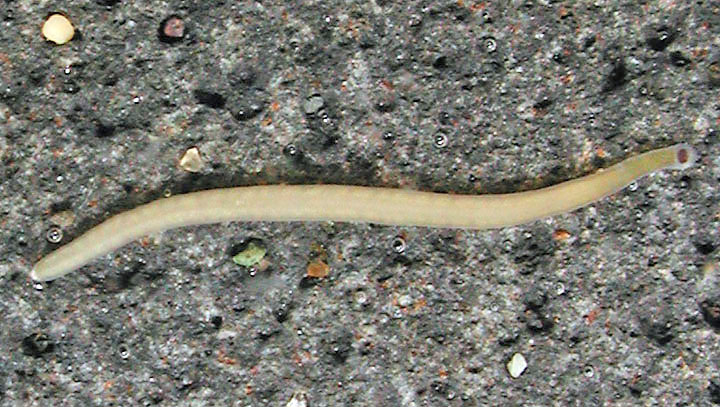
HEAD-SPOT RIBBON
WORM
Collected at Hekili Point, Olowalu, Maui on March 7, 2014. Cory
notes that he has seen this small worm several times.
++++++++++++++++++++++++++++++++++++++++++++++++++++++++++++++++++++++++++++++++++++++++++
|
|

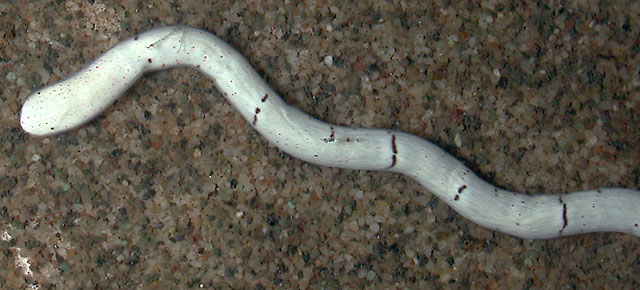
RINGED RIBBON
WORM
This small white or cream worm, found at Kapalua Bay, Maui, in March
2004, is marked with widely-spaced, discontinuous, narrow brown
rings.
++++++++++++++++++++++++++++++++++++++++++++++++++++++++++++++++++++++++++++++++++++++++++
|
|
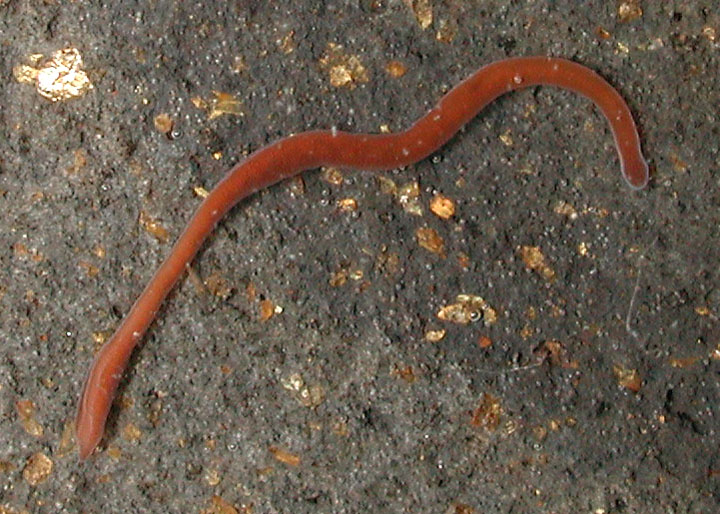
ORANGE-BROWN
RIBBON WORM
This small 11 mm worm was found at Hekili Point, Olowalu, Maui,
on April 19, 2012. Note the furrowed head.
++++++++++++++++++++++++++++++++++++++++++++++++++++++++++++++++++++++++++++++++++++++++++
|
|
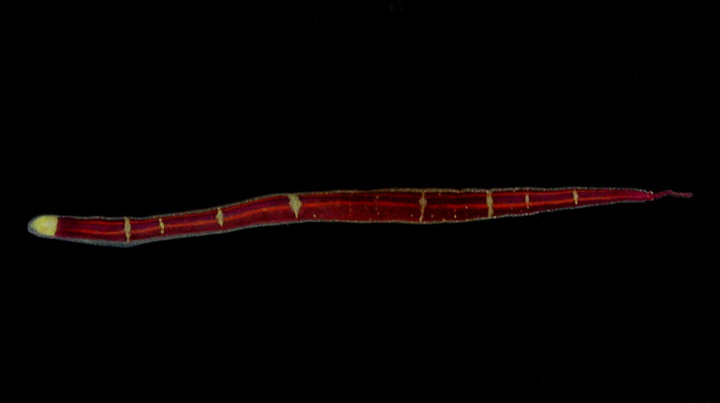
WHITE-TIP RIBBON
WORM
This is a tiny 4-5 mm worm collected by Cory Pittman at Koloa Landing,
Kauai, on May 30, 2014. It could be a small specimen of the White
Head Ribbon Worm (? Lineus albifrons) described below. The
sharply demarcated white head fits the original description, but
the body color does not.
++++++++++++++++++++++++++++++++++++++++++++++++++++++++++++++++++++++++++++++++++++++++++
|
|
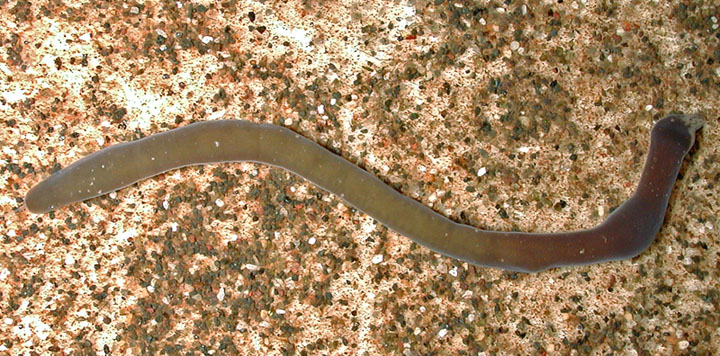

WHITE-HEAD
RIBBON WORM
? Lineus albifrons Coe, 1934
This 30 mm greenish-brown worm was taken by Cory Pittman in a wash
from the Halimeda beds at Maalaea Bay, Maui, on April 7, 2013. The
head has a whitish tip. Except that the white head is not sharply
demarcated, it seems to fit the description below, copied from Nemerteans
of the Hawaiian and Marshall Islands by Wesley Coe (Occasional
Papers of Bernice P. Bishop Museum, vol XIX, no. 3, 1947).
Lineus albifrons Coe, B.
P. Bishop Mus., Occ. Papers 10 (18): 8, fig. 4, 1934.
Body is deeply pigmented anteriorly, with a sharply demarcated broad
band
of white on tip of head on both dorsal and ventral surfaces. The
precise color
of the pigment in life has not been recorded. Back of anterior third
of body the
pigment gradually decreases' and posterior half of body is much
paler. Ocelli are
inconspicuous or absent.
L. albifrons is known from only a single specimen collected
at
Kahala, Oahu. This individual measured 14 mm. in length and 1.5
mm. in diameter after preservation.
++++++++++++++++++++++++++++++++++++++++++++++++++++++++++++++++++++++++++++++++++++++++++
|
|
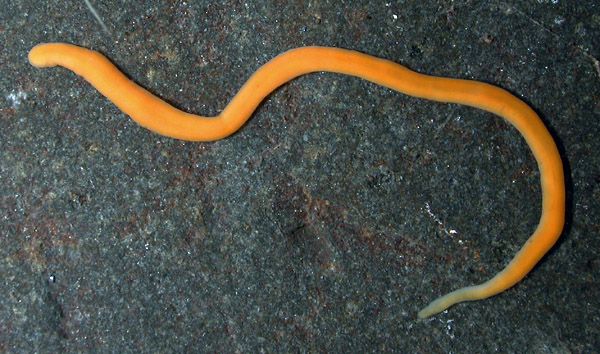
ORANGE RIBBON
WORM
Found at Black
Rock, Maui, April 29, 2006, this worm might be the same as the expanded
long yellow worm below..
++++++++++++++++++++++++++++++++++++++++++++++++++++++++++++++++++++++++++++++++++++++++++
++++++++++++++++++++++++++++++++++++++++++++++++++++++++++++++++++++++++++++++++++++++++++
|
|
Below are
some unidentified ribbon worms photographed by Pauline Fiene
Pauline Fiene sent me these photos of ribbon worms she has
seen off Maui over the years.
|
|
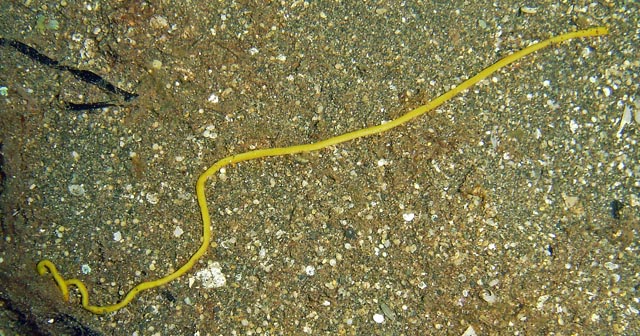
YELLOW RIBBON
WORM
Found and photographed on a dive off South Maui by
Pauline Fiene
++++++++++++++++++++++++++++++++++++++++++++++++++++++++++++++++++++++++++++++++++++++++++
|
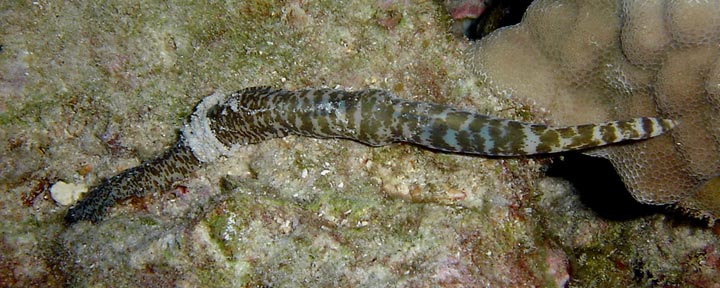
CAMOUFLAGE
RIBBON WORM
This worm was found
by divers Lori and Bill Pottinger, who reported it had just eaten
a fish! Pauline, who photographed it, arrived too late to see the
action. Lori and Bill did not know what kind of a fish it had eaten.
++++++++++++++++++++++++++++++++++++++++++++++++++++++++++++++++++++++++++++++++++++++++++
|
|
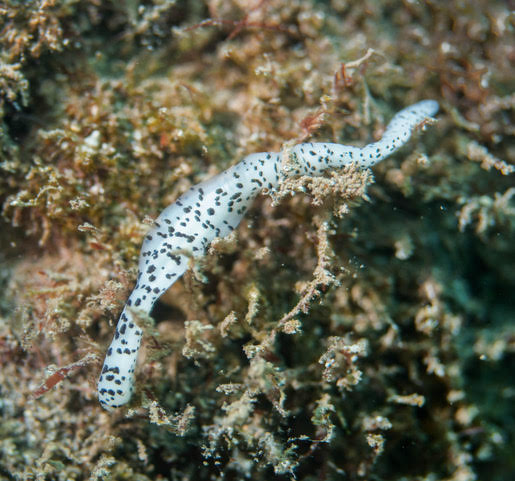
SPOTTED RIBBON WORM
Similar to the "Camouflage Ribbon Worm" above, but perhaps
too small to have eaten a fish, this worm was photographed by David
Prutow at Kawaihae Harbor on the Big Island at a depth of about
12 ft in November of 2020. David writes: "It was about 3/4
to an inch long … I had no idea what I was looking at …
I thought it might be a juvenile sea cucumber at first." There
are some online images of similar spotted worms from cool temperate
waters labeled Oerstedia dorsalis. But without a specimen
(and a ribbon worm specialist to examine it) there's no easy way
to know if that's a valid ID, or even close.
++++++++++++++++++++++++++++++++++++++++++++++++++++++++++++++++++++++++++++++++++++++++++
|
|
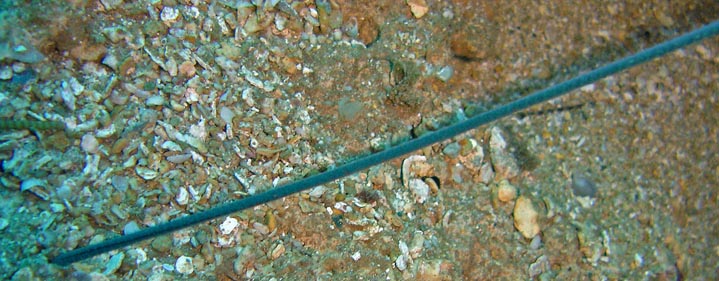
BLUE
RIBBON WORM?
This worm seems to be stretched up out of a hole in the substrate.
We are not sure it is a ribbon worm. It might be an annelid instead.
++++++++++++++++++++++++++++++++++++++++++++++++++++++++++++++++++++++++++++++++++++++++++
|
|
















